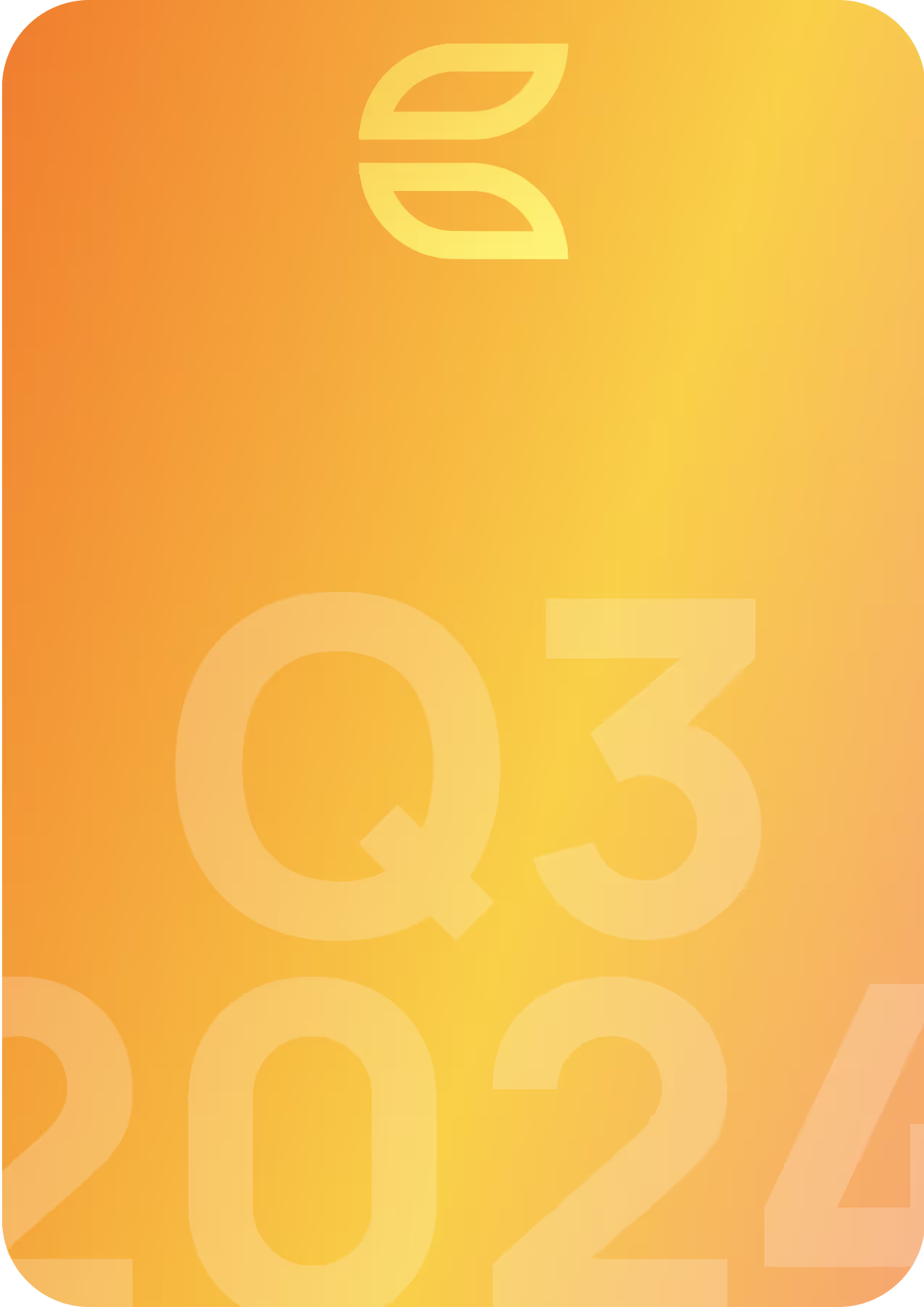Overview
The Q1 2025 blockchain employment landscape reveals a maturing sector with increasingly differentiated compensation structures across roles, geographies, and experience levels. Drawing from Calyptus' proprietary industry data, this analysis identifies critical trends for both talent acquisition specialists and career-focused professionals.
Key findings include a dramatic 80% premium for North American-based positions over their Asian counterparts, a continued elevation of specialized technical talent, with back-end developers commanding an average of $176,723, and a persistent valuation of in-office presence despite the sector's remote-first reputation.
This report offers strategic insights to help organizations navigate talent acquisition challenges and jobseekers position themselves optimally in this evolving marketplace.
Breakdown: Salaries & Skills Required. Salary Averages by Category
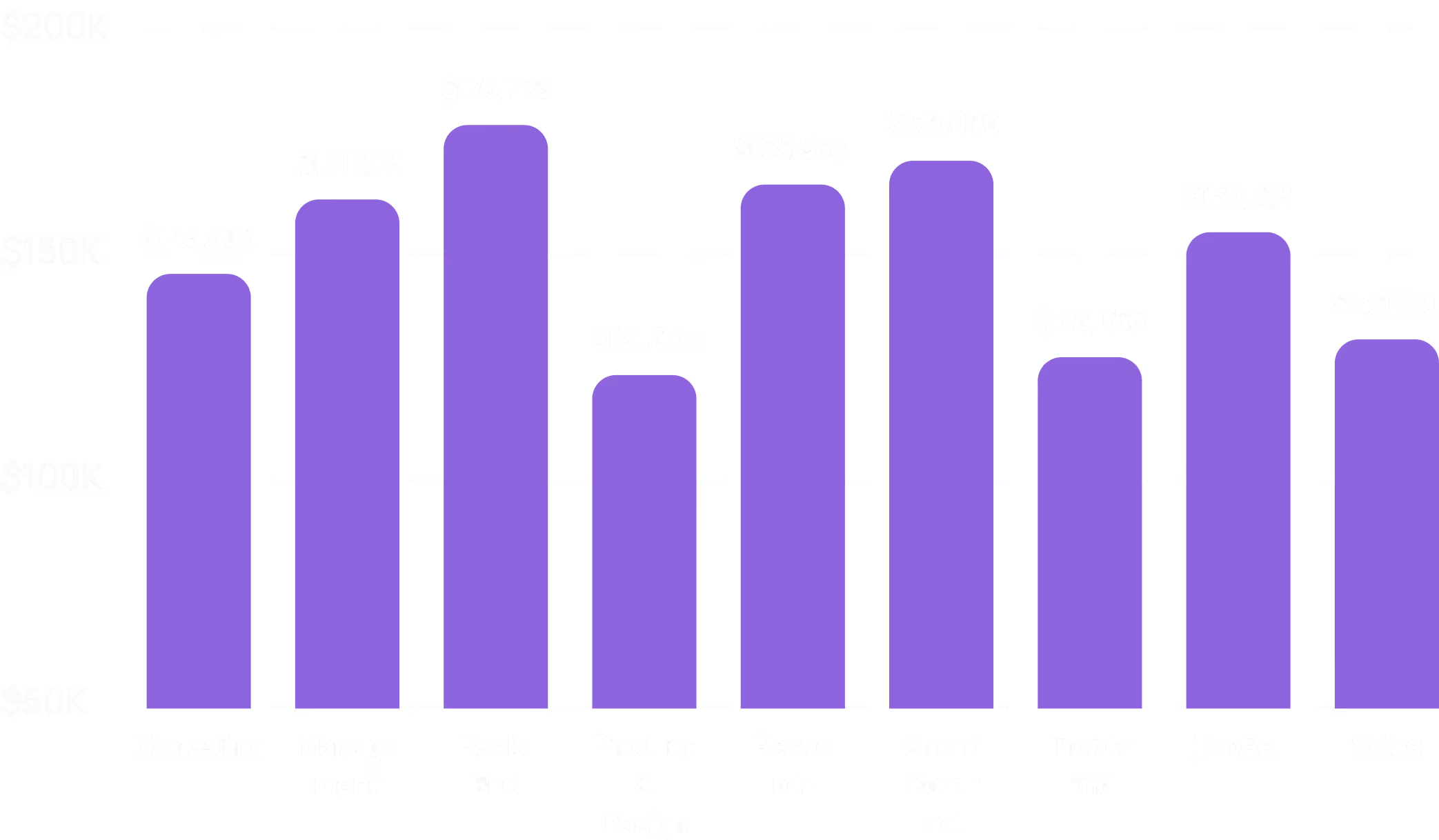
The blockchain ecosystem continues to reward back-end and management expertise with substantial compensation packages, with a significant fall in salaries for product, design & front-end roles potentially affected by AI tooling disruption.
Roles focused on generating user acquisition and retaining client relationships across sales, marketing & DevRel also attained sizeable salaries.
Blockchain, Web3, Analytics, Defi, Product. Marketing roles in the blockchain space require a blend of traditional marketing expertise and deep knowledge of Web3 and blockchain technologies to effectively target decentralized solutions and emerging markets.
An average salary of $148,500. The salary range spanned from $48K to $275K, with the majority falling between $90K and $160K.
Blockchain, Defi, Web3, Rust, Go. Management roles often combine strategic oversight with technical expertise in blockchain, Defi, and other Web3 technologies, requiring a balance between leadership and a technical understanding.
An average salary of $161,833. The salary range spanned from $75K to $300K, with the majority falling between $110K and $200K.
Rust, blockchain, Typescript, Web3. Expertise in backend languages such as Rust and Typescript combined with blockchain knowledge shows the increasing demand for strong, secure backend systems for decentralized applications.
An average salary of $176,723. The salary range spanned from $60K to $275K, with the majority falling between $151.25K and $200K
Product, Design, Blockchain, Web3, Defi. Product and design professionals need a strong understanding of both the aesthetic and functional aspects of decentralized applications, alongside blockchain and Web3 knowledge.
An average salary of $121,643. The salary range spanned from $55K to $240K, with the majority falling between $66.75K and $150.5K.
Python, blockchain, Solidity, Rust. Research roles increasingly require a strong foundation in blockchain and its related languages, with Python and Rust offering complementary skills in data handling and system efficiency.
An average salary of $165,556. The salary range spanned from $80K to $350K, with the majority falling between $110K and $200K.
Solidity, blockchain development, security. The emphasis on Solidity indicates a strong need for expertise in blockchain-specific languages, while security-focused skills highlight the high stakes associated with safeguarding decentralized applications.
An average salary of $170,000. The salary range spanned from $70K to $350K, with the majority falling between $127.5K and $200K.
React, Web3, Typescript, Blockchain, Frontend. Front-end developers are increasingly required to have a solid grasp of React and Web3, as well as the blockchain technologies driving decentralized applications, to create engaging user experiences.
An average salary of $128,056. The salary range spanned from $75K to $160K, with the majority falling between $112.5K and $160K.
Blockchain, Typescript, Ethereum, Python, React. Developer relations require communication skills combined with deep technical knowledge in blockchain, Ethereum, and tools like Typescript and React to facilitate collaboration and growth.
An average salary of $156,818. The salary range spanned from $55K to $210K, with the majority falling between $132.5K and $200K.
Defi, Product, Blockchain, Web3, API. Sales professionals in the blockchain space often require expertise in Defi and Web3, along with a technical understanding of blockchain products and APIs to effectively sell complex solutions to clients.
An average salary of $139,091. The salary range spanned from $75K to $200K, with the majority falling between $93.75K and $150K.
Pattern Analysis: Job Roles
Back-end development (176,723) and smart contract engineering (170,000) command the highest average compensation, reflecting the foundational importance of these roles in blockchain architecture.
Despite representing only 6% of positions analyzed, research roles exhibit the most dramatic salary variability (80,000-350,000), indicating both entry-level research opportunities and premium compensation for specialized expertise.
Front-End Reduction:
With Product & Design (averaging $121,643) and Front-End ($128,056) representing the three lowest-paid categories, we believe improved AI tooling might be affecting the salaries and demand for these types of professionals. A trend we will be tracking closely over the coming reports.
The near equivalence in compensation between management ($161,833) and technical specialties suggests a maturing industry that values organizational leadership alongside technical expertise.
Highest Salaries Across Web3 Roles
Entry Points: Junior Role Analysis
The recurring appearance of junior roles in emerging project categories suggests deliberate hiring strategies targeting early-career professionals, potentially offering growth opportunities in exchange for below-market initial compensation.
Workplace Preference in Web3
Salary Averages by Workplace Preference
This data reveals a striking inverse relationship between workplace flexibility and compensation. Despite representing over three-quarters of all positions, remote roles offer the lowest average compensation, trailing in-office positions by $31,275 annually. This differential suggests a quantifiable "flexibility discount" applied to location-independent work arrangements.
The premium commanded by in-office roles (20.4% higher than remote) indicates either:
- Organizations are strategically designating higher-value roles as in-person positions, or
- Companies are offering financial incentives to offset the decreasing appeal of location-bound employment.
For talent acquisition specialists, this pattern highlights a potential arbitrage opportunity: targeting high-performing remote professionals with hybrid arrangements that offer both lifestyle flexibility and enhanced compensation.
Seniority Breakdown in the Web3 Sector
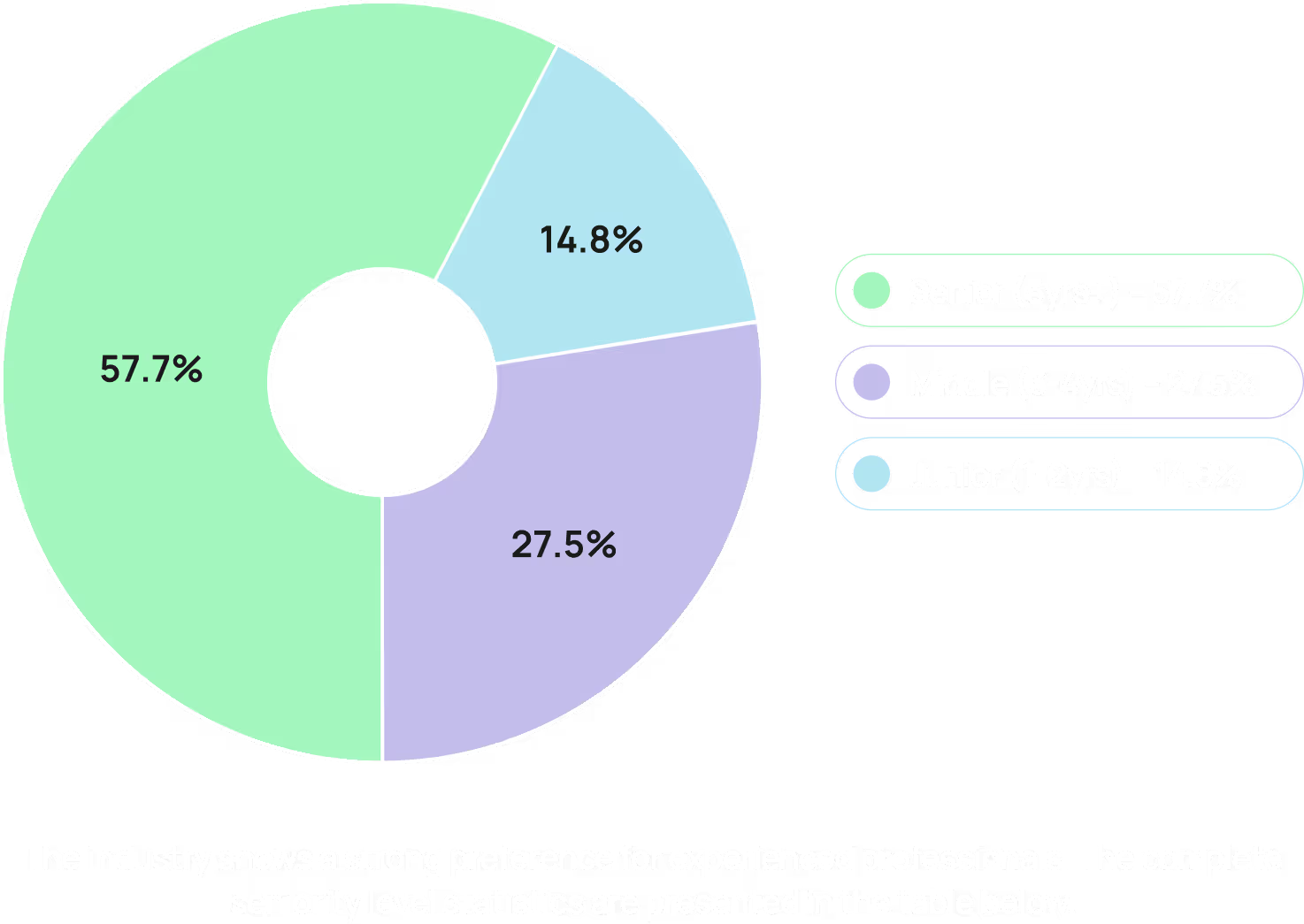
Salary Level Distribution:
The blockchain sector's disproportionate focus on senior talent (57.7% of positions) reveals an industry prioritizing established expertise over developmental hiring. The substantial compensation progression, a 93% increase from junior (94,545) to senior roles (182,750), quantifies the financial return on experience cultivation in this domain.
For organizations, this steep progression curve suggests a strategic opportunity to invest in junior talent development rather than competing for scarce senior resources. For professionals, it highlights the substantial returns available to those who successfully navigate this career trajectory.
Web3 Salaries by Region
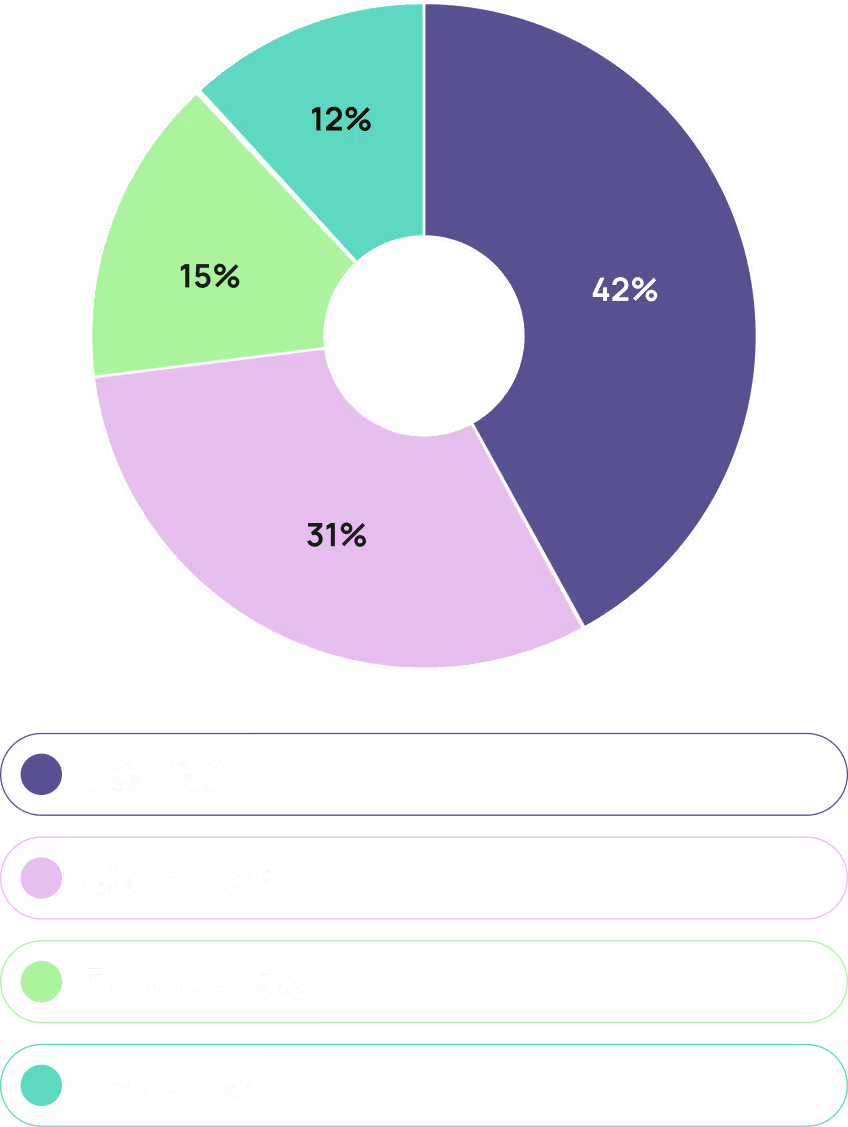
Both in opportunity concentration (42.3%) and compensation premium (80% higher than Asia), North American demand has increased significantly with a new crypto-friendly government and a reduced expectation around strict regulation.
"Global" now represents 30.9% of positions, with a noticeable shift away from location-independent talent acquisition.
The substantial compensation differentials between regions, particularly the lowest quartile salaries in Europe (65,000) compared to North America (190,625), present geographic arbitrage opportunities for both employers and professionals.
Strategic Implications & Market Outlook
Industry Maturation Indicators
The substantial variance in compensation across categories (from 121,643 for Product & Design to 176,723 for back-end) indicates an evolving ecosystem with specialized valuation of different skill sets and a deeper understanding of role-specific value contribution.
The 93% differential between junior and senior compensation demonstrates the industry's decisive transition from valuing novelty to prioritizing proven expertise, a hallmark of market maturation.
The persistent regional disparities in both opportunity density and compensation levels suggest an industry still navigating the tension between global talent pools and geographic talent hubs, with North America maintaining its position as the dominant ecosystem centre.
The clear compensation stratification across work arrangements (remote: 153,058; hybrid: $169,286; in-office: 184,333) reveals an industry that has quantified the premium it places on physical presence despite its technological foundations in decentralization.
Strategic Recommendations
For Talent & HR Specialists
Consider hybrid work models to bridge the compensation-flexibility gap, potentially attracting remote talent seeking enhanced compensation without sacrificing all location flexibility. The $16,228 average premium for hybrid over remote positions provides a quantifiable benchmark for this strategy.
Target talent in regions with lower median compensation (USA: $200,000; Europe: $111,250 vs. Asia: $82,500). There is significant arbitrage potential.
The substantial junior-senior compensation differential ($94,545 to $182,750) indicates potential returns from developing in-house talent rather than competing for scarce senior resources in an increasingly competitive market. This 93% premium for senior talent suggests significant ROI potential for developmental programs.
With management roles ($161,833) now commanding comparable compensation to technical specialities like back-end development ($176,723), ensure leadership packages remain competitive to attract organizational builders alongside technical innovators.
With Product & Design roles now combined and averaging $121,643, this area represents a strategic growth opportunity. The relative undervaluation compared to technical roles may signal an opportunity to differentiate through user experience excellence while the industry remains focused on technical infrastructure.
For Blockchain Professionals
With remote roles averaging $31,275 less than in-office positions, evaluate whether this "flexibility discount" aligns with your priorities and living cost considerations. For professionals in high-cost metros, this trade-off may represent net financial gain alongside lifestyle benefits.
Focus skill development on high-demand technical areas, particularly back-end development ($176,723) and smart contract engineering ($170,000), to maximize earning potential. The consistency of Ethereum as a skill requirement across categories suggests particular value in deepening expertise in this ecosystem.
Roles based in North America command a substantial premium ($182,230), representing an 80% increase over Asia-based positions ($101,154). This differential may justify relocation for career advancement, particularly given the concentration of opportunities (42.3%) in this region.
The steep progression from junior ($94,545) to mid-level ($141,927) roles highlights the considerable financial returns available to those who successfully navigate career advancement within the industry. The approximately $44,000 increment at each step provides a quantifiable benchmark for evaluating professional development investments.
Research positions continue to show the widest salary range ($80,000-$350,000), indicating significant upside potential for those who develop highly specialized expertise in this domain, a potential 338% progression from entry to peak compensation.
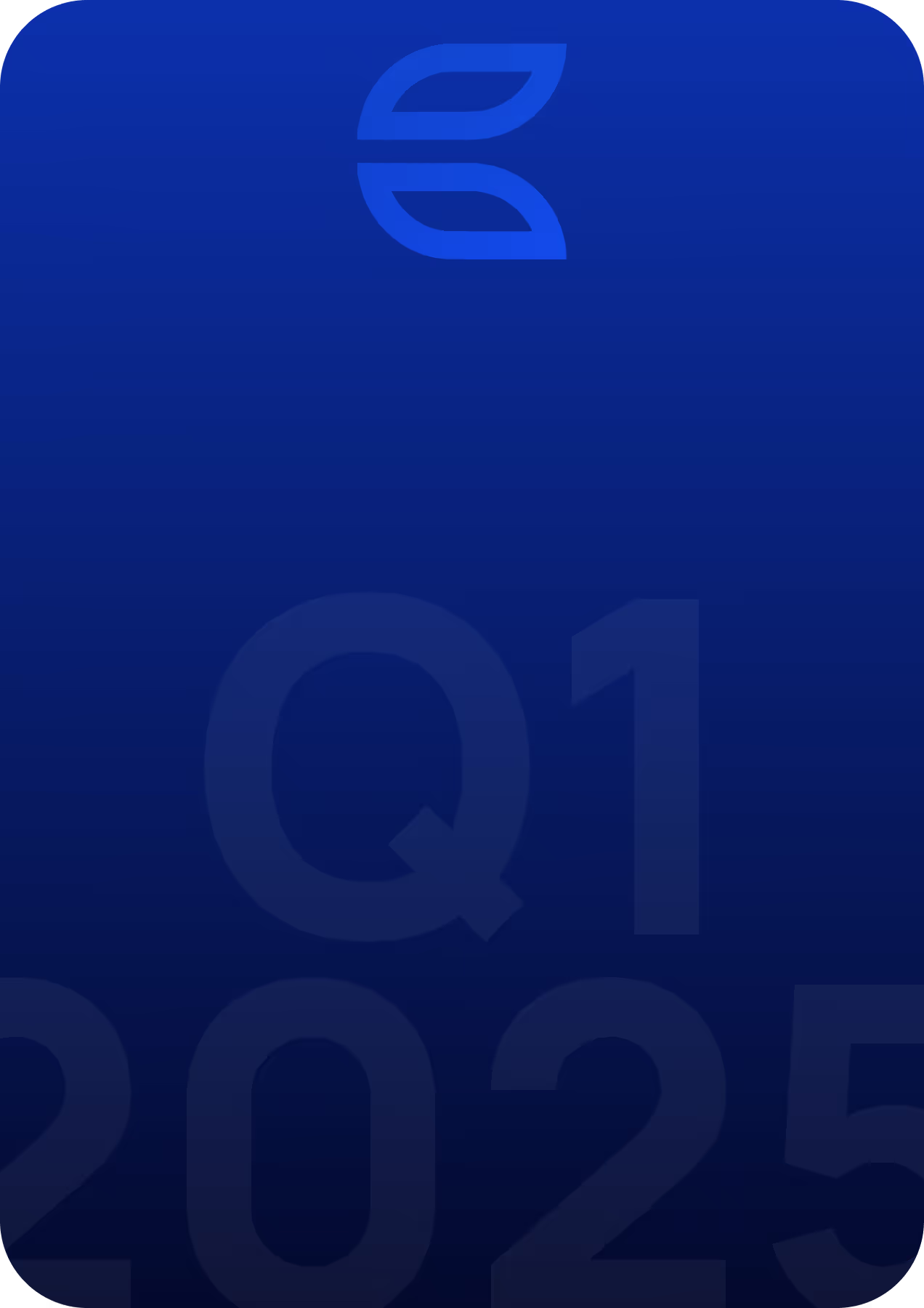
Conclusion: The Evolving Blockchain Talent Landscape
The Q1 2025 blockchain employment market exhibits the characteristics of an industry in transition, with a shift towards US roles driven by a crypto-friendly government and the expectation of lower regulations.
Front-end, product & design roles are showing signs of potential disruption from AI tooling based on a significant reduction in salaries on offer. This will be a trend we’ll be watching closely over the year.
Lastly, the move towards hybrid and in-person roles continues as over 1 in 4 jobs now have such requirements with significant upside in salary for any jobseeker willing to come back to the office.
Disclaimer: This report is based on data collected exclusively through the Calyptus platform and represents our findings for Q1 2025. It is intended for informational purposes only and may not reflect wider market trends or align with data from other sources. We advise readers to consider this context when interpreting our report. Our analysis should be used as one of several tools in understanding the evolving landscape of Web3 hiring, roles and salaries.
Get your free report
Share your details and get last quarter's breakdown from average tech salaries to workplace preferences in Web3.





